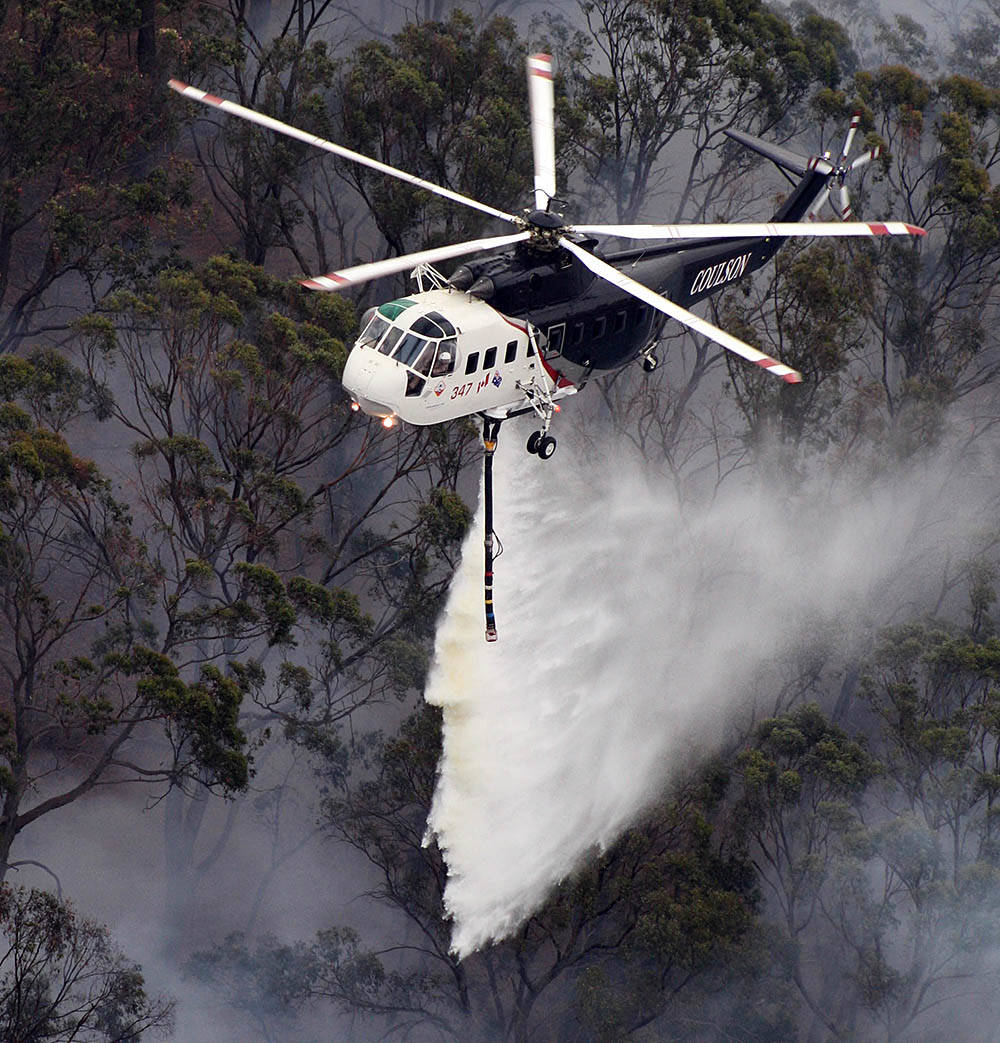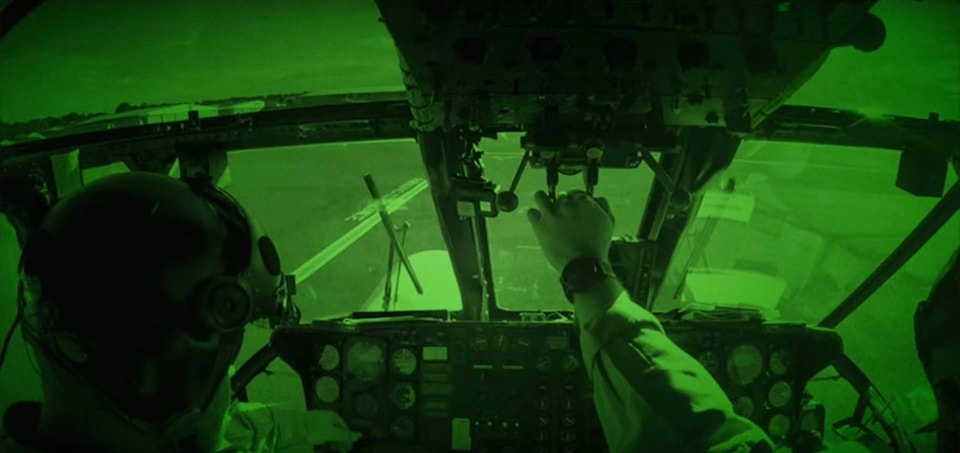BY MIKE YOUDS
Special to the News
Coulson Aviation has scored a first in aerial firefighting worldwide: official approval to suppress wildfires at night using night vision goggles.
The go-ahead comes from emergency management authorities in the State of Victoria, Australia, said CEO Wayne Coulson. Coulson Aviation’s S-61 Sikorsky helicopters begin flying night operations this fall using the goggles (NVG).
“We see where it could be a significant advantage,” Coulson said. “We’re in rarefied air when it comes to night vision goggles, the first company in the world approved to fly with them.”
NVG, pioneered during the Second World War, has been used primarily aboard military aircraft. The infra-red technology is touted as a strategic advantage in controlling wildfire since it has the capability of extending operational hours at a critical time of day when wind, temperature and humidity are optimal. In many cases this could give firefighters an upper hand.
The technology has been deployed periodically by American authorities over the years, but the U.S. Forest Service has so far restricted its use.
While aerial firefighting is done at night in some well-lit areas such as Los Angeles, the helicopters have to land to refill their water tanks, Coulson said. The Coulson system involves airborne refilling, a technique called “hover fill” that saves critical time.
The company has been working on the innovation for the past decade using the S-61 with its hefty 4,000-litre tank system. Sikorskys offer a key advantage, he noted. When hovering low over water to refill aircraft tanks, the pilot’s view isn’t obscured by backwash stirred up by rotors.
“We don’t have the same issue as most other helicopters.”
Use of spotter aircraft overhead help direct the Sikorskys to their target drops, one of several overriding safety measures to manage the risk associated with flying at night. As a result of these provisions, Coulson believes NVG-assisted operations are as safe as flying in daylight.
“Safety is paramount for everything we do.”
They have yet to convince North American government agencies to proceed with testing NVG, though discussions continue with the State of California. This winter, the company will install the technology in its heavy lifter, the C130 Hercules, for testing by the Civil Aviation Safety Authority.
B.C. Wildfire Service continues to research NVG as an option for helicopters only, though it has no field trials planned.
“The BCWS is also considering what missions we reasonably need to do to meet the needs of fire operations and whether or not alternatives exist that lower the risk exposure for our staff and are cost effective.”
They also intend to review Coulson Aviation’s Australian trials.
Authorities Down Under, more so than their North American counterparts, are committed to capitalizing on technical advances, Coulson said.
“They want change. In Australia, they’ve lost a lot of communities going back the ’60s. There is more of an appetite for a new model with firefighting aircraft on 24-hour standby just like an ambulance or fire truck. We are an emergency service like any other.”
The State of Victoria has 60,000 firefighting volunteers and neighbouring New South Wales has 70,000.
“Everybody’s world is wildfire because everybody’s been affected some way, shape or form over the decades.”
He recalled one blaze in particular in which a Coulson Sikorsky night operation proved decisive.
“The aircraft was able to catch a fast running fire on Christmas Eve that would have been catastrophic. And we were able to make a difference.”

